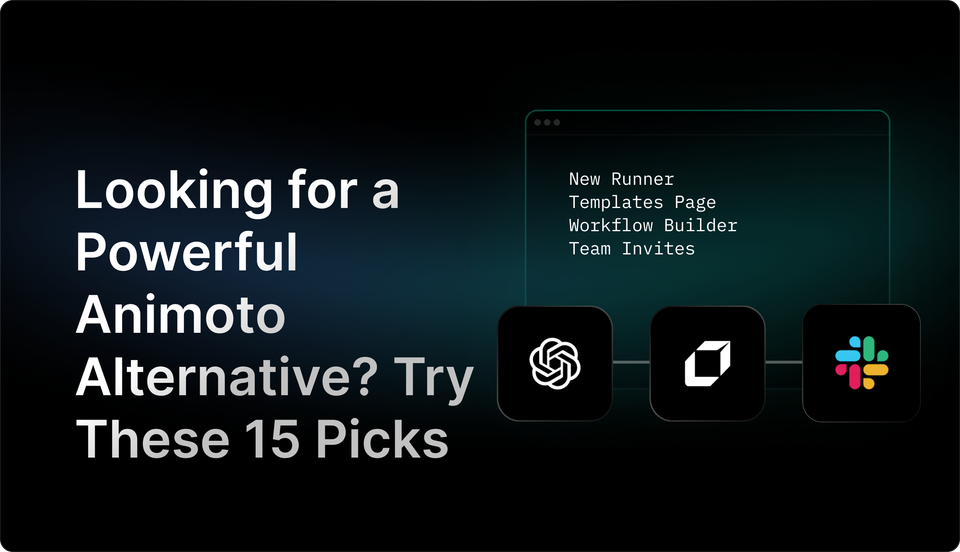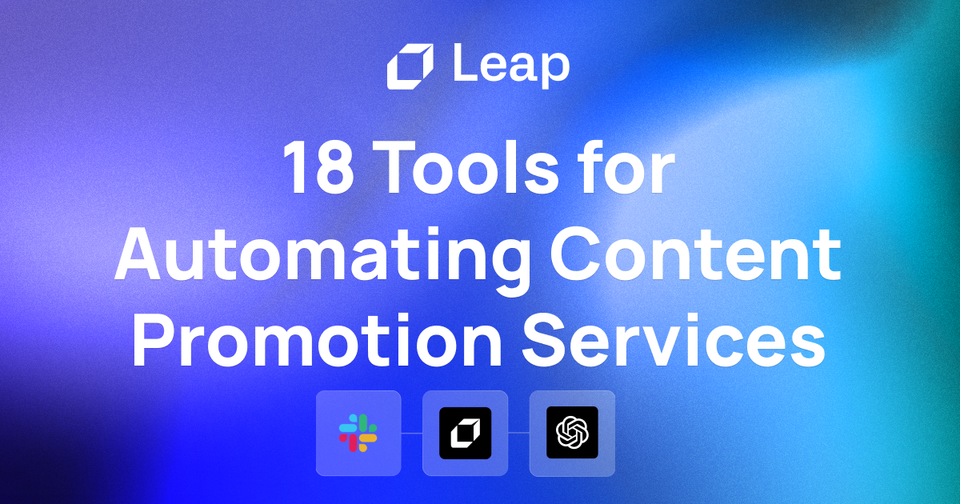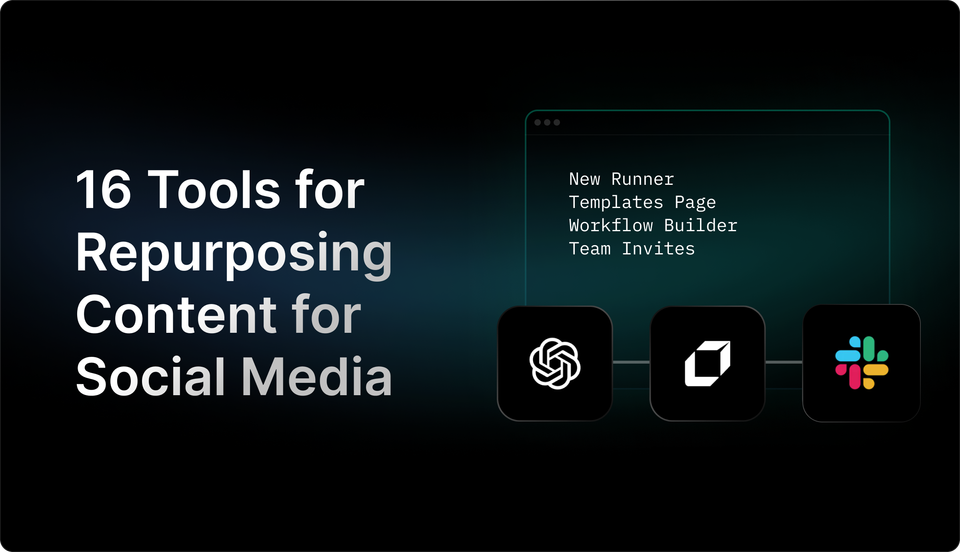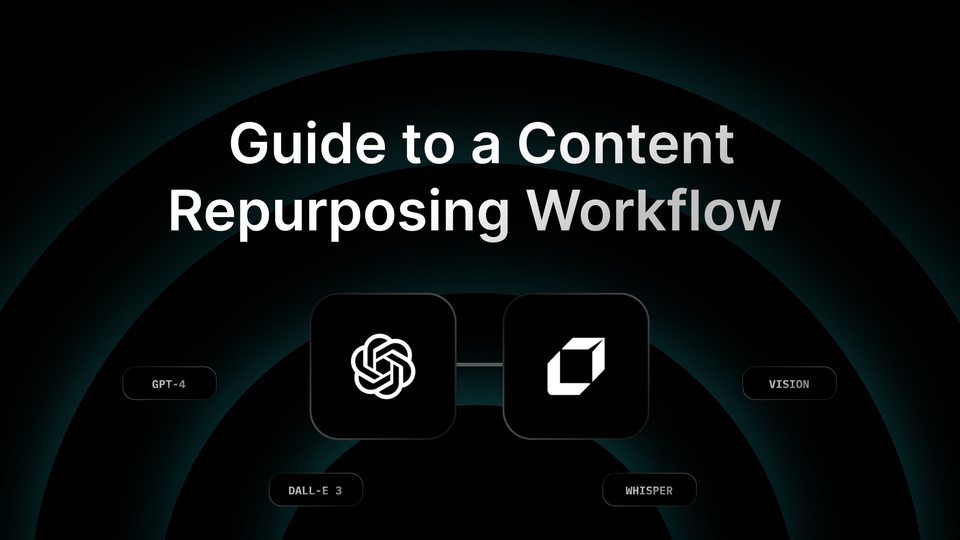How to Craft a Winning Content Distribution Strategy in 9 Steps
Want to maximize the reach of your content? Follow these steps to create a successful content distribution strategy and expand your audience!
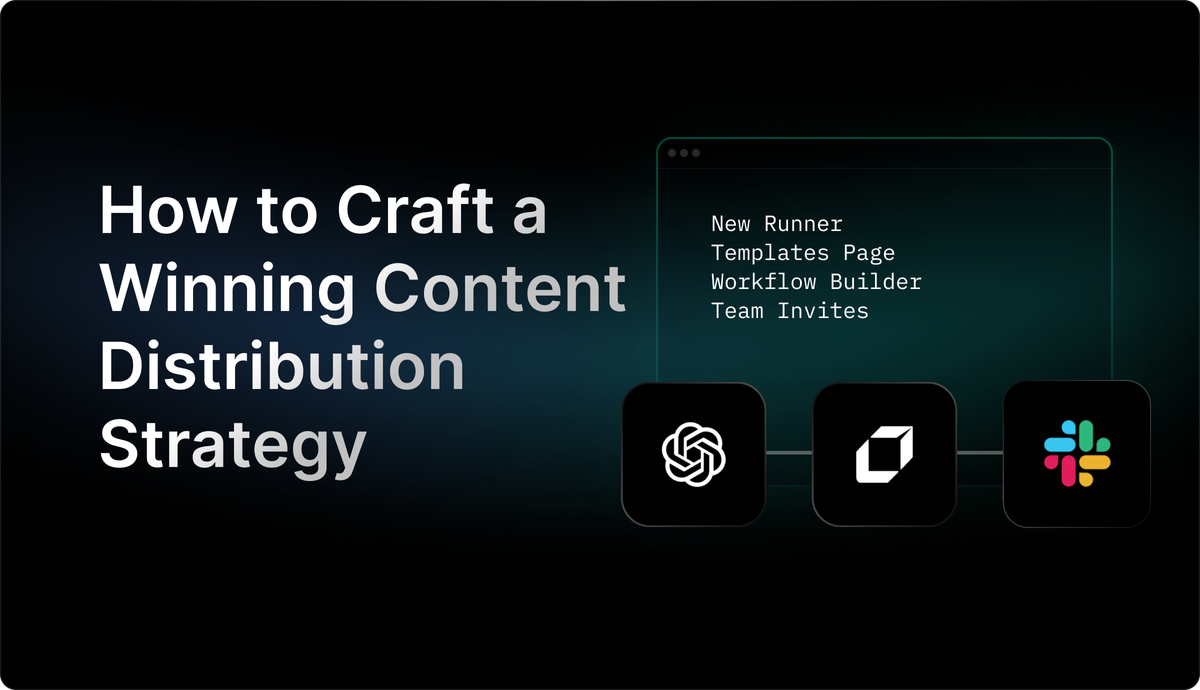
In the world of digital marketing, a successful content distribution strategy is key to gaining visibility, building an audience, and generating leads. Content distribution involves getting your material in front of the right audience at the right time, to maximize its impact. With a great content distribution strategy, you can get your content in front of your audience where they already are, engaging them and building trust with them. When your content is more visible, shares and engagement increase, and so does your brand reputation.
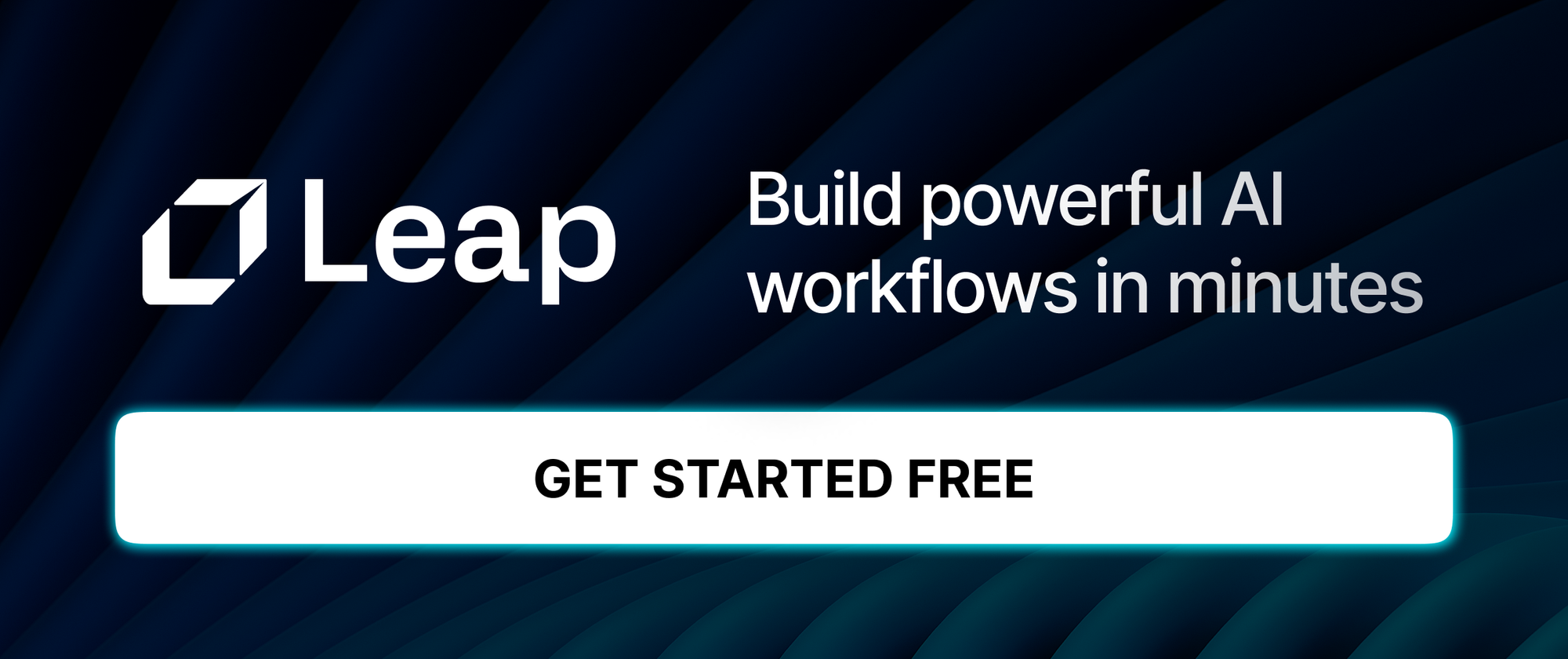
What is Content Distribution and Why It Matters

Effective distribution can catapult your content from the backwaters of the internet to the big stage. It's the unsung hero of audience engagement, brand visibility, and overall content marketing success. In the overcrowded content space, where daily content creation outpaces human consumption by staggering margins, you need a well-crafted content distribution strategy in your arsenal.
The Content Distribution Strategy
One way to ensure your content doesn't get lost in the noise is to define a content distribution strategy. A content distribution strategy is a blueprint that outlines how, when, and where you'll publish and promote your content. Amassing a large Twitter following, for example, could be a vital part of your strategy. Or maybe you're leaning more on LinkedIn. It's a living document that adapts as you learn and grow.
The Backbone of Content Distribution
Your team is the backbone of your strategy. It's a group of people who understand your brand and its content and who know how to get it where it needs to go. Your team includes everyone from the writers and editors who create the content to the social media managers and SEOs who promote it. It even includes the designers who ensure your visuals are on brand. Your team must be aligned, working in harmony to ensure each piece of content gets the distribution it deserves.
The Content Impact
Great content is like a tree falling in a remote forest: it's useless if nobody reads it. Content distribution, then, is the act of making sure your content is heard.

Understanding Content Distribution Channels

Exploring Owned Channels for Content Distribution
Owned channels are online platforms and assets that businesses own or control, such as websites, social media pages, and blogs. With owned channels, businesses have complete control over content creation and distribution. The reach of owned channels is limited to existing followers and subscribers. Examples of content types typically used for owned channels include blog posts, ebooks, and case studies.
Pros of Owned Channels
- Businesses have complete control over content creation and distribution
- Content can be tailored to target audience and customers
- Can test a variety of content types and distribution strategies
Cons of Owned Channels
- Reach is limited to existing followers and subscribers
- Difficult to attract new audiences without paid promotion
Diving into Earned Channels for Content Distribution
Earned channels involve the sharing and promotion of content by external sources, such as social media users, backlinks, and media coverage. Unlike owned channels, businesses do not have complete control over distribution on earned channels. Earned channels offer the potential for increased or even viral reach and can serve as a validation of the quality and authority of the content. The key content type for earned channels is shareable content that encourages engagement, such as videos, thought leadership, and testimonials.
Pros of Earned Channels
- Expanded reach and building authority
- Validation of content quality and authority
- Potential for viral reach
Cons of Earned Channels
- No control over distribution
- Lower predictability of results compared to owned channels
Understanding Paid Channels for Content Distribution
Paid channels involve the promotion of content through paid advertising and sponsored content. Paid channels offer immediate and measurable results in terms of reach and engagement. They require a dedicated budget and are best suited for short-term gains, rather than building exposure and reach for the long term. The key content type for paid channels is targeted and eye-catching content that encourages clicks and conversions.
Pros of Paid Channels
- Immediate and measurable results in terms of reach and engagement
- Ability to target specific audiences
- Quick way to boost content visibility
Cons of Paid Channels
- Requires a budget
- Less effective in generating organic reach compared to owned and earned channels.
Related Reading
- Content Promotion
- Content Repurposing
- Content Promotion Strategies
- How To Repurpose Content
- Content Distribution Platforms
Step-by-Step Guide To Craft a Winning Content Distribution Strategy

Researching Your Target Audience
Before creating a content distribution strategy, it's essential to research your target audience. This helps you understand who will consume your content, allowing you to tailor your strategy to reach the right people.
- Start by collecting demographic data from your website visitors, email subscribers, social media followers, and customers. This includes information like gender, age, income, location, and education.
- Gather feedback directly from your audience to learn about their pain points, preferences, and opinions on your current content and distribution efforts.
By creating buyer personas based on this data, you can better understand your ideal consumers and align your strategy with their needs and motivations.
Auditing Your Content
While you may already have published content, auditing it is crucial to determine its impact on your distribution efforts. Tools like Screaming Frog can help you log your content, listing URLs, titles, and descriptions in a spreadsheet. By assessing your content's impact using tools like SEMRush, you can identify pieces that need updating or removal. You can use tools like Ahrefs Content Gap or perform keyword research to find content gaps and improve your rankings.
Choosing Your Content Distribution Channels
Your content distribution channels are vital to reaching your audience effectively. By analyzing your target audience, you can select the best platforms for sharing your content. This may include forums, social media, or traditional PR, depending on your audience's preferences. Don't forget to optimize your owned channels like your blog, email newsletter, and social media profiles, as they reflect your brand and offer cost-effective distribution options.
Deciding on Your Content Types
After selecting your distribution channels, consider the types of content you want to create. While many companies focus on blogs due to their broad appeal, consider other formats like videos, infographics, or podcasts. Repurposing and sharing content across various channels can help expand your reach and engage different audience segments.
Setting Your Content Distribution KPIs and Goals
Goals and key performance indicators (KPIs) are essential for measuring success and tracking progress. Establish SMART goals for metrics like traffic, engagement, impact, and sentiment. By setting specific, measurable, attainable, relevant, and time-bound goals, you can align your content distribution efforts with broader marketing strategies and track your performance effectively.
Building an Editorial Calendar (and Include Distribution)
An editorial calendar helps plan your content creation and distribution efforts, keeping your team aligned and focused on common goals. Use tools like CoSchedule or Asana to organize your content schedule and track distribution activities. Your editorial calendar should include the types of content, channels, and distribution plans for each piece.
Creating Your Content
Once you've done the groundwork, it's time to create content. Use tools like AnswerthePublic for topic ideas, Canva for visuals, Vidyard for videos, or Anchor for podcasts. Develop high-quality content that aligns with your goals and resonates with your target audience.
Distributing and Marketing Your Content
After creating your content, it's crucial to distribute and market it effectively. Follow your editorial calendar and utilize chosen channels to share your content with the right audience. Optimize your posts for each platform to maximize engagement and visibility.
Measuring and Analyzing Your Results
Regularly monitor your content's performance using tools like Google Analytics and social media dashboards. Track metrics like traffic, engagement, impact, and sentiment to evaluate your distribution strategy's effectiveness. By analyzing your results consistently, you can identify trends, make data-driven decisions, and optimize your content distribution efforts for future success.
Top 38 Tools for an Effective Content Distribution Strategy

1. Leap AI
Leap AI is an exceptional tool that harnesses the power of AI to automate your content distribution strategy. It provides custom AI automations with no-code, allowing you to connect your favorite tools with AI text, image, and audio models. From summarizing documents to SEO automation, Leap Workflows helps you automate various processes seamlessly.
2. Buffer
Buffer is a user-friendly tool that simplifies content sharing on social media platforms like Facebook, Instagram, and Twitter. With one click, you can schedule content to appear at specific times, queue old content, and measure metrics using Buffer analytics. The tool breathes new life into old content by allowing you to add images or videos directly from the dashboard.
3. MeetEdgar
MeetEdgar is a handy tool for reposting archived content on social media platforms when you're running short on fresh content. It saves time and effort by re-sharing old posts, ensuring consistent social media presence. You can schedule posts for upload and manage your content efficiently with this tool.
4. WiseStamp
WiseStamp is a tool tailored for businesses that focus heavily on written communication. It helps you share social media account details and email signatures seamlessly, leaving a lasting impression on your customers. With WiseStamp, you can create, manage, and automate your email signature to enhance brand visibility.
5. Goodbits
Goodbits is an excellent tool for sharing content with your target audience through email newsletters. It automates content distribution from RSS feeds, Twitter, and other platforms, saving you time collecting and organizing information. The drag-and-drop editor allows you to customize mailing lists, streamlining your content distribution process.
6. Mailchimp
Mailchimp is a go-to tool for email campaign management, offering automated content distribution services for marketers. It helps manage subscribers, send newsletters, and track campaign results efficiently. You can automate the distribution of new posts and leverage analytics reports to optimize future campaigns.
7. SumoMe
SumoMe is a WordPress plugin equipped with various tools for distributing owned and earned media. It features giveaway widgets, sign-up bars, and sharing tools for social media networks. The Share tool helps redistribute content across platforms, while heat maps track user clicks to optimize content placement.
8. Constant Contact
Constant Contact facilitates email distribution to stay connected with your audience. The drag-and-drop feature simplifies template customization, enabling easy integration of branding content. The tool converts emails into social media posts, expands your social media reach, and builds online communities effectively.
9. Click to Tweet
Click to Tweet is a convenient tool for sharing content and creating links to posts and product launches. It allows users to share original messages on Twitter with a single click, enhancing the virality of your content on social media platforms like Twitter.
10. Medium
Medium provides a platform for content distribution without limitations on post length. With over 80 million users worldwide, it offers access to an engaged audience. The relaxed atmosphere on Medium encourages in-depth and informative content creation, making it ideal for diverse brands looking to share engaging stories.
11. LinkedIn Publisher
LinkedIn Publisher is a powerful tool for amplifying your brand's reach among professionals. It allows posting blogs with CTA buttons that direct readers to your website's landing pages. The platform's viral potential and professional user base make it an excellent content distribution tool for B2B and professional content.
12. Facebook Notes
Facebook Notes is a feature for publishing text and images on your profile or business page. It enables the creation of summarized content linked back to your blog posts, driving traffic to your website. By linking notes to landing pages, you can leverage Facebook as a content distribution channel effectively.
13. Hootsuite Amplify
Hootsuite Amplify enables content amplification by notifying employees about fresh content, prompting them to share it on their social media accounts. This tool is beneficial for companies with large employee bases to enhance content distribution among a wider audience.
14. SlideShare
SlideShare is a versatile tool for sharing content through slideshows, presentations, videos, and infographics. With millions of users globally, SlideShare offers a vast audience base to distribute your content efficiently.
15. OnePress Social Locker
OnePress Social Locker allows you to control content visibility by locking social media content until readers share it on platforms like Twitter and Facebook. This tool encourages more shares and enhances the reach of your content.
16. Help a Reporter Out (HARO)
HARO is an effective platform for sharing articles on top publications worldwide. It provides an opportunity to connect with journalists, foster relationships, and promote your website through articles published on renowned media outlets.
17. PR Newswire
PR Newswire is a reliable tool for distributing newsworthy content to various sources, including media outlets. With access to nearly 200,000 media sources, PR Newswire is ideal for promoting your brand and sharing essential information effectively.
18. Listly
Listly is a user-friendly tool for building and publishing lists in specific areas, enhancing content visibility. This tool simplifies list creation and sharing, making it easier to reach and engage with your target audience.
19. NinjaOutreach
NinjaOutreach is a valuable tool for connecting with influencers and expanding your content distribution network. It streamlines influencer outreach and collaboration, enabling efficient content promotion through influencers.
20. Contently
Contently is a versatile platform for writers, content specialists, and enterprises to create and distribute content effectively. It serves as a marketplace for freelancers to showcase their portfolios and helps enterprises find quality writers for content creation and distribution.
21. Quora
Quora offers a platform to share brand expertise by answering questions and engaging with a diverse online community. By sharing knowledge and insights on Quora, you can establish credibility and build an online audience effectively.
22. Reddit
Reddit is a popular platform for finding and sharing informative content across various subreddits. By engaging with like-minded communities and sharing relevant content, you can enhance content visibility and reach a broader audience.
23. Outbrain
Outbrain is an automated content distribution tool that connects your content with reputable publishers to reach niche audiences. By leveraging Outbrain's network, you can distribute your content effectively to like-minded individuals and boost sharing opportunities.
24. Taboola
Taboola is a content discovery platform with a vast audience base and content recommendations across leading publisher sites. It helps your brand reach a wider audience by promoting content through clickbait techniques and relevant recommendations.
25. Nativo
Nativo is a native advertising tool associated with prestigious publisher sites, offering native ad placements to enhance content distribution and drive conversions. By using Nativo, you can include CTAs that direct readers back to your website, improving engagement and audience reach.
26. Mix
Formerly known as StumbleUpon, Mix specializes in curating great content across the web based on user preferences. By describing your content requirements, you can discover and share specific content effectively through Mix.
27. Triberr
Triberr acts as a bridge between brands and influencers, facilitating content distribution and audience expansion. This platform helps influencers promote and share content, driving traffic and increasing audience engagement effectively.
28. HubSpot
HubSpot is an automation tool for content distribution, allowing you to coordinate social media accounts, posts, contacts, and CTAs for effective marketing campaigns. By scheduling updates and reaching multiple users on various platforms, HubSpot streamlines content distribution processes.
29. Sprout Social
Sprout Social is a comprehensive tool for planning and managing social media posts collaboratively. With a content calendar, team members can review, modify, and publish updates seamlessly, optimizing content distribution strategies and enhancing campaign performance.
30. GaggleAMP
GaggleAMP is an invaluable tool for large businesses to streamline content distribution among employees. By sending notifications to employees and encouraging content sharing, GaggleAMP helps boost online activities and increase content reach effectively.
31. SimpleReach
SimpleReach optimizes content distribution by tracking social behavior and providing real-time performance metrics. With analytics tools, you can measure content performance, identify high-traffic content, and improve distribution strategies efficiently.
32. Zemanta
Zemanta is an AI-powered tool for content distribution, allowing you to optimize content for indexing, recommendations, and sponsored links on other websites. By leveraging analytics and engagement metrics, Zemanta enhances content engagement and reduces bounce rates effectively.
33. Oktopost
Oktopost is designed for B2B social media posts, offering efficient content distribution and management tools. By scheduling posts across platforms like Twitter, Facebook, and LinkedIn, Oktopost helps identify high-performing content and optimize distribution strategies for new customer acquisition.
34. Zapier
Zapier is an automation tool for social networking platforms, enabling task coordination, event control, and content distribution automation. By integrating Zapier with various platforms, you can streamline processes, notify form submissions, and manage leads efficiently.
35. Adblade
Adblade is a top native advertising platform that connects your content with leading websites for targeted content distribution. By using Adblade, you can access a wide audience base and retarget users effectively, enhancing content reach and engagement.
36. Facebook Sponsored Posts
Facebook sponsored posts help increase brand visibility and engagement on social media. By creating paid posts on your business page and targeting niche audiences, you can enhance content reach and drive meaningful interactions effectively.
37. Mention
Mention is a social media monitoring tool that provides listening, publishing, and crisis management features. By monitoring brand mentions and social networks, Mention helps measure content impact and engagement, enabling timely responses and effective content promotion.
38. SharedCount
SharedCount is an engagement measurement tool for social media posts, reporting likes, shares, comments, and other engagement metrics. By analyzing post-performance, SharedCount helps identify top-performing content and optimize distribution strategies for improved engagement and reach.
Related Reading
- Content Repurposing Workflow
- Repurposing Content For Social Media
- Content Promotion Services
- Video Content Distribution
- Animoto Alternative
- Social Media Distribution
- Content Repurposing Service
- Repurpose Video Content
- Paid Content Distribution
- Content Distribution Software
Best Practices for Maximizing Distribution Effectiveness

Optimizing for SEO
Optimize your content for search engines by incorporating relevant keywords, meta descriptions, and titles. This will ensure that your content is easily discoverable online, increasing its reach and visibility. A good SEO strategy is to focus on long-tail keywords. Long-tail keywords are more specific and less competitive, providing solid opportunities to improve your SEO rankings.
Collaborating with influencers
Partner with social media influencers and thought leaders in your industry to expand your reach and tap into new audiences. Influencers can share your content with their followers, increasing your brand’s exposure and credibility.
Leveraging user-generated content
The most trusted content online is not “expert” opinions, brand-produced content, or influencer content, but rather content that is generated by users themselves. With so much information at their fingertips, many prefer content that is created by people just like them. UGC is seen as more “authentic” and is therefore more likely to engage readers. This is definitely a strategy you should incorporate in your content distribution efforts. Encourage customers to create and share their own content, such as product reviews or testimonials.
Experimenting with different content types
The best approach to content distribution is to create a variety of content for a range of channels. Diversify! Keep your audience engaged and attract new followers with content such as blog posts, videos, podcasts, infographics, ebooks, thought leadership articles, case studies, whitepapers, social media posts, and more.
Monitoring and analyzing performance
Checking the performance of content manually is only going to get you so far. Use tools like Google Analytics, HotJar, Crazy Egg, Moz, and Ahrefs, and Buffer and Sprout Social for social media analytics. These provide businesses with a clear understanding of the overall effectiveness of their content distribution strategy. Implement changes proactively by analyzing your content performance metrics regularly.
Related Reading
- Content Distribution Companies
- Planable Alternatives
- Repurpose Alternative
- Repurpose Blog Content
- Content Promotion Tools
- Visme Alternatives
- B2b Content Distribution
- Socialpilot Alternatives
- Vidyo Ai Alternatives
- Content Distribution Services
- Meetedgar Alternatives
- Missinglettr Alternatives
- Lumen5 Alternative
Create Game Changing Automations Today With Leap’s AI Workflows
Creating a content distribution strategy is crucial for reaching a larger audience and maximizing the impact of your content. The manual process of distributing content can be time-consuming and inefficient. With Leap's AI Workflows tool, you can automate many elements of your content distribution strategy to save time and increase your reach.
Optimizing SEO with AI Tools
SEO is essential for ensuring your content ranks well in search engine results. Leap's AI Workflows can automate many SEO tasks, helping you optimize your content for search engines. By incorporating AI tools for keyword research, content optimization, and link building, you can improve your content's visibility and attract more traffic to your website.
Enhancing Social Media Distribution with AI
Social media is a powerful platform for sharing content and engaging with your audience. By leveraging Leap's AI Workflows, you can automate social media distribution tasks such as scheduling posts, analyzing engagement metrics, and optimizing content for different platforms. This can help you maintain a consistent social media presence and increase your content's reach.
Streamlining Email Marketing with Automation
Email marketing is an effective way to nurture leads and drive conversions. With Leap's AI Workflows, you can automate many aspects of your email marketing campaigns, such as segmenting your email list, personalizing content, and analyzing performance metrics. By automating these tasks, you can save time and deliver more targeted and relevant content to your subscribers.
Analyzing Data with AI-Powered Insights
Data analysis is crucial for measuring the success of your content distribution strategy. Leap's AI Workflows can help you automate data collection and analysis tasks, providing you with valuable insights into the performance of your content. By leveraging AI models for sentiment analysis, trend identification, and performance tracking, you can make data-driven decisions to optimize your content distribution strategy.
Integrating AI Tools to Enhance Content Distribution Strategy
AI tools can supercharge your content distribution strategy by automating repetitive tasks, providing valuable insights, and optimizing content for better performance. By integrating Leap's AI Workflows with your existing tools and platforms, you can create a seamless and efficient content distribution strategy that drives results.

